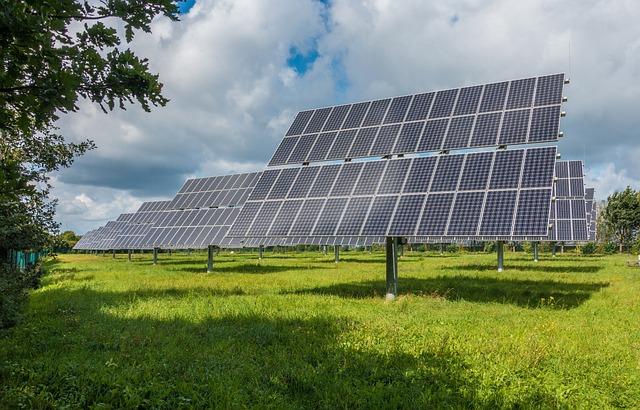In the rapidly evolving landscape of renewable energy, solar power stands out as a beacon of hope for a sustainable future. Yet, as sunlight cascades down to power our homes and industries, a shadow of doubt looms over the claims of solar efficiency made by companies eager to capture the market’s attention. With technological advancements racing ahead, the promise of converting sunlight into energy with greater efficiency has become a central selling point. But are these promises as bright as they seem? This article delves into the heart of the solar industry, peeling back layers of marketing sheen to explore whether solar companies are truly transparent about the efficiency claims they make. As we navigate through the world of photovoltaic cells and energy output, we aim to illuminate the truths and misconceptions that may influence the choices of eco-conscious consumers and investors alike.
Evaluating the Truth Behind Solar Efficiency Claims
When diving into the world of solar technology, one of the most touted aspects is the efficiency of solar panels. Many companies boast high-efficiency ratings, promising optimal energy output even in less-than-ideal conditions. However, discerning consumers might wonder if these claims are entirely truthful. It’s crucial to consider that efficiency can be influenced by numerous factors, including the quality of materials used, the geographic location of the installation, and the angle of the panels. Efficiency ratings are often determined under specific test conditions, which may not reflect real-world scenarios.
Consumers should be aware of several key points when evaluating efficiency claims:
- Testing Conditions: Efficiency ratings are typically measured under Standard Test Conditions (STC), which might not replicate everyday environmental conditions.
- Degradation Over Time: Solar panels naturally lose some efficiency as they age, a factor that might not be prominently featured in marketing materials.
- Installation Factors: The actual efficiency of a solar system can vary based on installation specifics, such as shading and orientation.
- Company Reputation: Not all companies are equally transparent. Researching a company’s track record can provide insights into the reliability of their claims.
Understanding Industry Standards for Measuring Solar Performance
The solar industry relies on a set of recognized standards to assess and communicate the performance of solar panels. These benchmarks are crucial for ensuring that the efficiency claims made by manufacturers are both accurate and comparable across different products. Key standards include those set by the International Electrotechnical Commission (IEC) and the American Society for Testing and Materials (ASTM), which provide guidelines on everything from the materials used in solar cells to the methods for measuring their energy output.
- IEC 61215: Focuses on the performance and reliability of crystalline silicon terrestrial photovoltaic (PV) modules.
- IEC 61646: Pertains to the thin-film terrestrial PV modules’ design qualification and type approval.
- ASTM E1036: Establishes the standard practice for testing solar panel performance under standard test conditions (STC).
While these standards aim to provide a consistent framework, it is essential for consumers to understand that real-world conditions can significantly impact solar panel efficiency. Environmental factors such as temperature, shading, and geographical location can all lead to variations in performance. Therefore, while industry standards offer a baseline for comparison, transparency from solar companies regarding how these figures translate into everyday use is paramount.

Spotting Misleading Marketing Tactics in Solar Energy
In the booming solar energy market, distinguishing genuine claims from exaggerated ones is becoming increasingly crucial. Many companies promise sky-high efficiency rates for their panels, but the reality might not be as bright. Efficiency is often presented as a straightforward percentage, but its calculation can be affected by numerous factors that are not always disclosed. Here are some red flags to watch out for:
- Selective Testing Conditions: Companies may advertise efficiency ratings achieved under ideal laboratory conditions, which rarely reflect real-world performance.
- Ambiguous Terminology: Look out for vague terms like “up to” which can suggest maximum performance rather than average or typical output.
- Incomplete Data: Transparency demands a full picture, including potential efficiency drops due to weather, panel degradation, or shading.
By recognizing these tactics, consumers can make more informed decisions, ensuring that their investment in solar energy is based on reality rather than inflated promises.

Guidelines for Consumers to Verify Solar Panel Efficiency
When evaluating the efficiency of solar panels, consumers can take several proactive steps to ensure they are getting accurate information. Research is the cornerstone of this process. Start by delving into the manufacturer’s claims and cross-referencing them with third-party reviews and test results. Many independent organizations conduct efficiency tests and publish their findings online, which can provide a more balanced perspective. Additionally, consult the specification sheets provided by manufacturers; these documents often contain essential data on panel efficiency under different conditions.
Another key approach is to verify the certifications and standards the solar panels adhere to. Look for certifications from reputable bodies such as the International Electrotechnical Commission (IEC) and Underwriters Laboratories (UL). These certifications ensure the panels meet specific quality and performance standards. Furthermore, engage with solar professionals who can offer insights based on practical experience. They can help interpret technical jargon and advise on the best options based on your unique circumstances. By taking these steps, consumers can make informed decisions and select solar panels that truly meet their efficiency expectations.
Insights and Conclusions
As we draw the curtains on our exploration of solar companies and their efficiency claims, the sun’s rays continue to illuminate both the potential and the pitfalls within this burgeoning industry. Transparency, like sunlight itself, is essential for growth and trust. While strides have been made towards clarity and accountability, the path ahead calls for vigilance from both consumers and companies alike. It is a journey that demands questions, nurtures innovation, and ultimately, fosters a brighter, more sustainable future. As we stand at the crossroads of technology and truth, the power to choose wisely is firmly in our hands, guiding us towards a world where promises are as bright as the sun that fuels them.

































